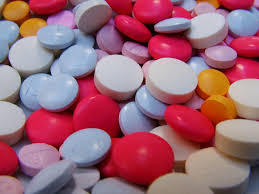Symptom Finder - Stool Color Changes
STOOL COLOR CHANGES
What may be black and white and red all over? The answer is not the
newspaper but the pathologic changes in the stool. A black stool is usually
melena but do not be fooled by iron ingestion or the bismuth in a commonly used antacid. A white or light-colored stool is most commonly found following the ingestion of a barium test meal, but the clay-colored stool of obstructive jaundice suggests the most important disease to be considered. The stool is light yellow to foamy in celiac disease. In mucous colitis, a large cast of white mucus (sometimes 6 to 10 in [15.2 to 25.4 cm] long) may be described as a white “stool.” A red stool signifies blood from the lower bowel in most cases, but ingestion of red beets is not an uncommon cause.
The riddle mentioned above forms a key to remembering the causes of aberrations in stool color. Another method is to apply biochemistry. The normal color of the stool is due to the pigment urobilinogen. Color changes may result from a decrease in or absence of this pigment (obstructive jaundice), from an increase (hemolytic anemia) or the addition of another pigment (hemoglobin in melena), and finally from the addition of another substance such as mucus in mucous colitis, fat in celiac disease, and bismuth in antacid ingestion.
What may be black and white and red all over? The answer is not the
newspaper but the pathologic changes in the stool. A black stool is usually
melena but do not be fooled by iron ingestion or the bismuth in a commonly used antacid. A white or light-colored stool is most commonly found following the ingestion of a barium test meal, but the clay-colored stool of obstructive jaundice suggests the most important disease to be considered. The stool is light yellow to foamy in celiac disease. In mucous colitis, a large cast of white mucus (sometimes 6 to 10 in [15.2 to 25.4 cm] long) may be described as a white “stool.” A red stool signifies blood from the lower bowel in most cases, but ingestion of red beets is not an uncommon cause.
The riddle mentioned above forms a key to remembering the causes of aberrations in stool color. Another method is to apply biochemistry. The normal color of the stool is due to the pigment urobilinogen. Color changes may result from a decrease in or absence of this pigment (obstructive jaundice), from an increase (hemolytic anemia) or the addition of another pigment (hemoglobin in melena), and finally from the addition of another substance such as mucus in mucous colitis, fat in celiac disease, and bismuth in antacid ingestion.

